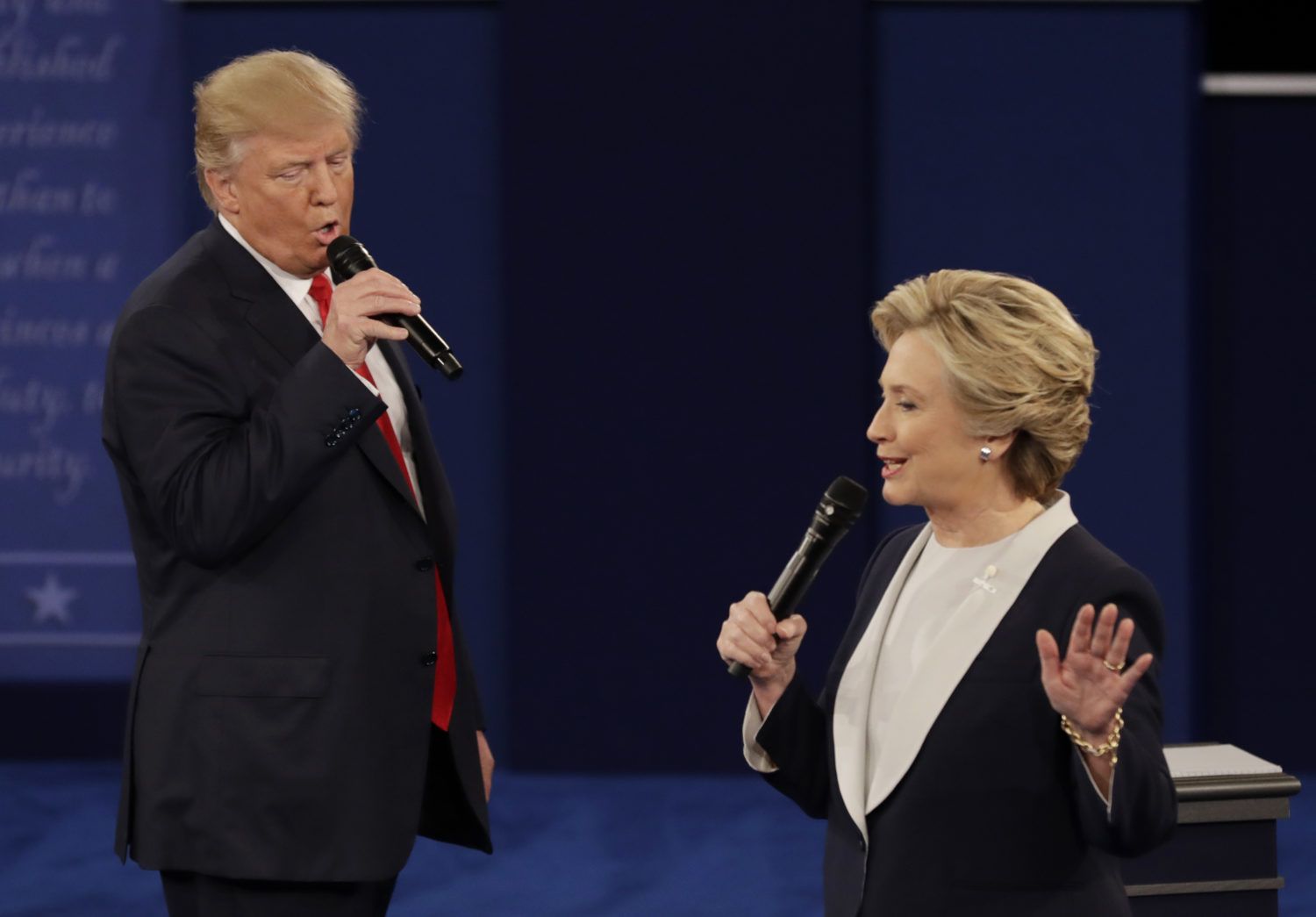Ever since the 2016 presidential election, when Donald Trump outperformed the polls and defeated Hillary Clinton, Democrats have been nervous about losing the presidential race, no matter how strong Joe Biden’s leads in the polls have been.Seth Masket, a University of Denver political scientist and author of “Learning from Loss: The Democrats 2016-2020,” recently described conversations he had with Democratic activists while writing the book.
“The 2016 election results caused them to question everything: Every tool they had and every instinct they’d developed over decades in politics told them one thing was going to happen, and something else did,” Masket wrote. “It undermined their confidence and made them less likely to believe even the most favorable polling environment.”
Political experts say, however, that Biden’s position today is significantly stronger than Clinton’s was four years ago. While Trump could still win the election, some of the dynamics that figured prominently in his upset victory last time are different this year, and could make it harder for him to manage a similar upset.
Here’s a look at what has changed.
There are fewer undecided voters this year
After four years in office, few Americans are unsure how they feel about Trump. Most potential voters either strongly support him or strongly oppose him. This means there are fewer undecided voters in play for Trump to win over to his side.
This pattern shows up across a variety of polls. Here’s a chart of national polls taken in the closing weeks of the 2016 and 2020 campaigns. We compared polls from the same survey firm for both years, in order to smooth out differences in methodology.
In each poll, the combined percentage of undecided voters and those supporting third-party candidates dropped from 2016 to 2020. In most of them, the combined percentage fell by 50% or more in 2020.
“Voters are overwhelmingly deciding between Biden and Trump,” said University of Wisconsin political scientist Barry Burden. “Trump is an extremely well-known figure compared to his first run in 2016. It is fair to say that this election is predominantly a referendum on Trump’s first term and that few voters remain unsure about whether he should stay or go.”
“There is less chance of a late-breaking surge toward Trump like there was in 2016,” agreed Wayne P. Steger, a political scientist at DePaul University in Chicago. The onset of Trump’s surge in 2016 coincided with the release of an investigatory letter about Clinton by then-FBI chief James Comey in late October. With a large pool of undecided voters, that kind of revelation made a difference in 2016. That’s less likely in 2020.
Voters were much more drawn to third-party candidates in 2016
There’s another portion of the electorate that’s smaller in 2020: Fewer voters are considering a third-party candidate.
In fact, the 2016 election proved to be a high-water mark for third-party voters in recent decades.
Here’s a chart showing the ultimate share of votes won by third-party candidates, going back to 1980. Setting aside the candidacies of the three “major” third-party candidates during that period — John Anderson in 1980 and Ross Perot in 1992 and 1996 — minor third-party candidates tended to win between 1% and 2% of the vote collectively, in any given election.
In 2016, by contrast, minor candidates combined for about 6% of the vote.
In 2016, Green Party nominee Jill Stein “was a familiar and appealing alternative for some progressive voters unhappy with Clinton’s connections to the Washington establishment,” Burden said. “On the conservative side, the Libertarians put together an unusually credible ticket featuring two former Republican governors, Gary Johnson and Bill Weld.” A third candidate, anti-Trump conservative Evan McMullin, also drew support.
But in 2020, the minor parties are not being led by such visible nominees, Burden said. One well-known candidate is musical artist Kanye West, but he doesn’t appear to be gaining momentum, and he’s not on many state ballots.
“The 2020 election, even with sharp partisan polarization, is a return to normal” in terms of third-party candidates, said Steven Smith, a political scientist at Washington University in St. Louis.
Biden is not as unpopular as Clinton was
A big reason for the high level of undecided and third-party voters in 2016 is that both Trump and Clinton were personally unpopular in 2016. Today, while Trump remains unpopular, Biden is relatively well-liked.
This chart shows that in 2016, both Trump and Clinton had unfavorable ratings that exceeded their favorable ratings by a sizable margin. This year, Trump is somewhat less unpopular than in 2016, but he’s still significantly underwater in favorability.
Biden, meanwhile, is in positive territory: He has a favorable rating that exceeds his unfavorable rating.
The candidates’ unpopularity in 2016 “delayed voter decision-making and sent many dissatisfied voters searching for other options,” Burden said.
This year, though, Biden’s edge in favorability gives voters who don’t like Trump a major-party candidate who’s more palatable than Clinton.
The polling this year is much more stable, with a wider gap
In 2016, Clinton usually led in the FiveThirtyEight polling average, but at times the two candidates were in a virtual dead heat, and the biggest gap she managed over Trump was about 7 percentage points. By the end of the race, she was ahead by just 3 or 4 points.
In 2020, the pattern has been different. Ever since the coronavirus emerged in March 2020, Trump has never been able to pull ahead of Biden in the FiveThirtyEight polling average. The closest Trump has come was a 3.4 percentage point gap in early April. And since the beginning of October, Biden has led Trump by between 7 and 10 points.
“The polls were more volatile in 2016, with some respondents changing their minds in response to events,” Steger said. “The polls this year are stunningly stable, and people are not responding to events. People made up their minds this year in the spring, and nothing has changed.”
Biden has been much more likely to exceed 50% in the polls
When analyzing polls, it’s important to look not just at the margin between the candidates, but also at whether the leader has broken 50%.
Once a candidate consistently hits 50%, it’s harder for their opponent to win, at least in the popular vote, because the opponent would need to peel away supporters of their rival to come out ahead, rather than wooing undecided voters.
Shortly before the 2016 election, Clinton’s share in the national FiveThirtyEight polling average was 45.7%. But Biden at the moment is at 52.1%. That’s not a big difference, but because Biden has managed to cross the 50% threshold, it’s an important one.
The same pattern can be seen in the key swing states.
In 2016, Clinton was several points below 50% in Wisconsin, Michigan, and Pennsylvania — the three states that effectively swung the election to Trump.
But in 2020, Biden is above 50% in each of them.
The state-level polling errors from 2016 have been addressed (hopefully)
While the national polls weren’t far off in 2016 — Clinton did win the popular vote by about 2 percentage points — some key state polls were, and those states are the ones that made a difference in Trump winning the electoral college.
One of the reasons, polling analysts later determined, was that election outcomes have become increasingly correlated with a few key demographic factors, notably educational attainment. Americans without college educations are increasingly backing Republicans and Trump, while college-educated voters are increasingly voting for Democrats.
Many state polls did not adjust their data for educational attainment in 2016, which produced overly rosy numbers for Clinton.
“The industry has known for years that they have to adjust for education, because for whatever reason, people with more formal education are more likely to respond to polls than people with less,” Courtney Kennedy, the director of survey research at the Pew Research Center, has told PolitiFact. “That was a fatal problem in 2016 because education was quite a good predictor of people’s votes.”
While not every poll has been adjusted for education in 2020, many have taken that extra step, and that should increase their accuracy.
None of this means that Trump won’t win again in 2020. But the combination of these factors suggests that his path to victory will be much harder this year than it was in 2016.
This article is republished with permission, and originally appeared here. PolitiFact is part of the Poynter Institute. See sources for this article here and more of their fact-checks here.







